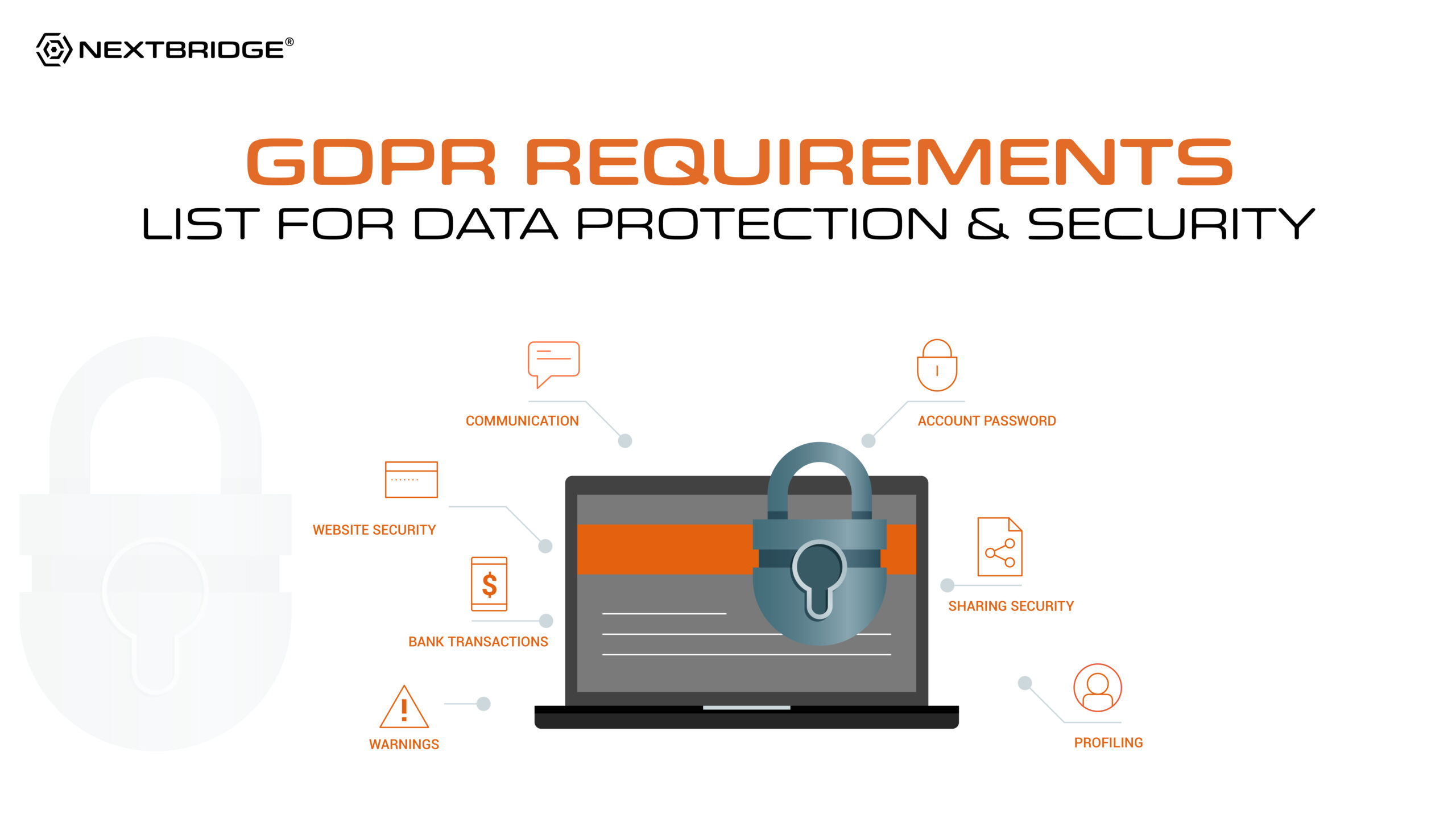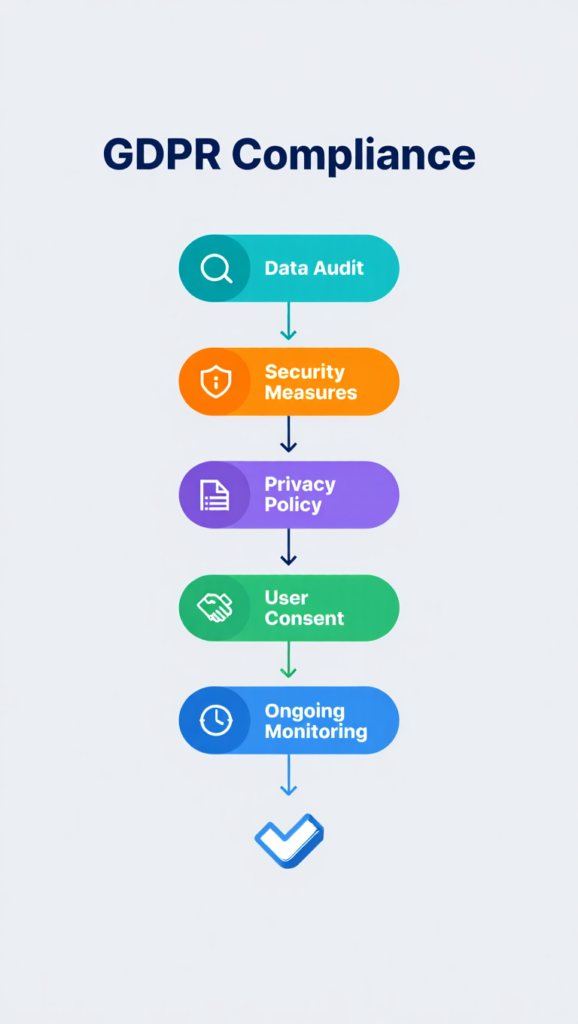 Back to all articles
Back to all articles
Blogs
GDPR Requirements List for Data Protection & Security


Are you running your physical or online business in the United Kingdom (UK) or European Union (EU) countries, and does your company collect and process personal user data? If so, you need to meet the GDPR requirements. If you don’t do so, you might end up suffering from serious financial damages and harm to the reputation of your business.
The General Data Protection Regulation (GDPR) is comprehensive and covers a broad range of requirements that your business must follow. It might sound burdensome to comply with the rules on governance, accountability, and transparency, but the GDPR requirements list keeps you on track practically.
In this blog, you will explore why GDPR compliance is important to you and how to comply with GDPR requirements to keep user data protected and secure.
Why is Compliance to GDPR Important?
Being GDPR compliant helps you in protecting the personal data of users, preventing hefty penalties, and, as a result, building long-lasting customer trust. However, getting GDPR ready is something more than a legal requirement. GDPR compliance requirements give you an opportunity to:
- Reviewing the way you collect, store, and share your business data
- Strengthening the protection practices of your data
- Enhancing transparency and accountability
- Gaining the loyalty and trust of the users who are conscious about their privacy
For companies operating globally, especially outside of the UK and Europe, it is equally important to understand the GDPR requirements list for US companies and prevent data privacy issues.
To Whom Does GDPR Compliance Apply?
Compliance with GDPR is mandatory for all those businesses that
- Are present in the EU or the UK.
- Are processing and/or controlling personal data of residents and citizens of the EU and the UK, no matter where they are present physically.
Processing and controlling data might sound similar, but they are different processes.
Data processing means storing, retrieving, manipulating, or transmitting data. Third parties
and automated tools are the data processors. On the other hand, controlling data means collecting and owning data, and companies, individuals, and Governments are considered data controllers.
GDPR Requirements List
As a part of their structured GDPR compliance assessments, global businesses refer to the GDPR audit program and assess the gaps and risks in data continuously. Have a look at the following GDPR audit checklist to ensure you are complying with GDPR.

| GDPR Requirements List | Overview | How to Comply |
| Auditing and mapping of personal data | Perform a complete audit of the personal data, followed by a clear data mapping. Have a clear understanding of the personal data you are collecting, why you are collecting it, its storage space, and who can access it. | GDPR audit requirements include reviewing:
|
| Ensuring website security | Ensure your website’s security by protecting the website itself and the data stored on it from threats of external attacks. | GDPR website compliance checklist:
|
| Regularly updating Privacy Policy | Keep your privacy policy transparent, concise, and accessible on each web page. Place it in a consent form or in the footer. Clearly mention the way you handle data. |
|
| Asking permission for marketing emails | Have a mailing list of the EU and UK citizens? Ask for their consent before sending our newsletters. |
|
| Adding a cookie banner | Get users’ cookie consent if your website stores unnecessary cookies on their devices through a cookie banner: informing users about its cookies’ uses and the information they store. Also, give them the right to refuse them. |
|
| Reviewing forms on the website | Collect data through inquiry, subscriptions, or a contact form safely. |
|
| Evaluating data processors/third-party services | Be responsible for handling personal data as a processor or controller. |
|
| Assessing international data transfer | Ensure that users’ personal data is protected when you transfer it from the EU and the UK to other countries. |
|
| Giving users data rights | Provide users with the right to gather information related to their personal data, followed by requests to delete or correct it anytime. |
|
| Assessing and resolving data breaches | Prepare yourself in advance for data breaches. |
|
With the purpose of aligning with data privacy and security standards, many global companies partner with SCO2 vendors and ensure that they fulfill GDPR outsourcing or outsourcing security checklist requirements.

Conclusion
Implementing the correct GDPR compliance strategies leads you towards user data protection and strong customer trust. By reviewing the GDPR requirements list and taking corrective measures, you can strengthen the users’ data protection and accountability. Once you understand how to be GDPR compliant, your business will become secure, transparent, and fulfill the expectations for global privacy.
Don't hire us right away
talk to our experts first,
Share your challenges, & then decide if we're the right fit for you! Talk to Us
Partnerships & Recognition
Commitment to excellence






